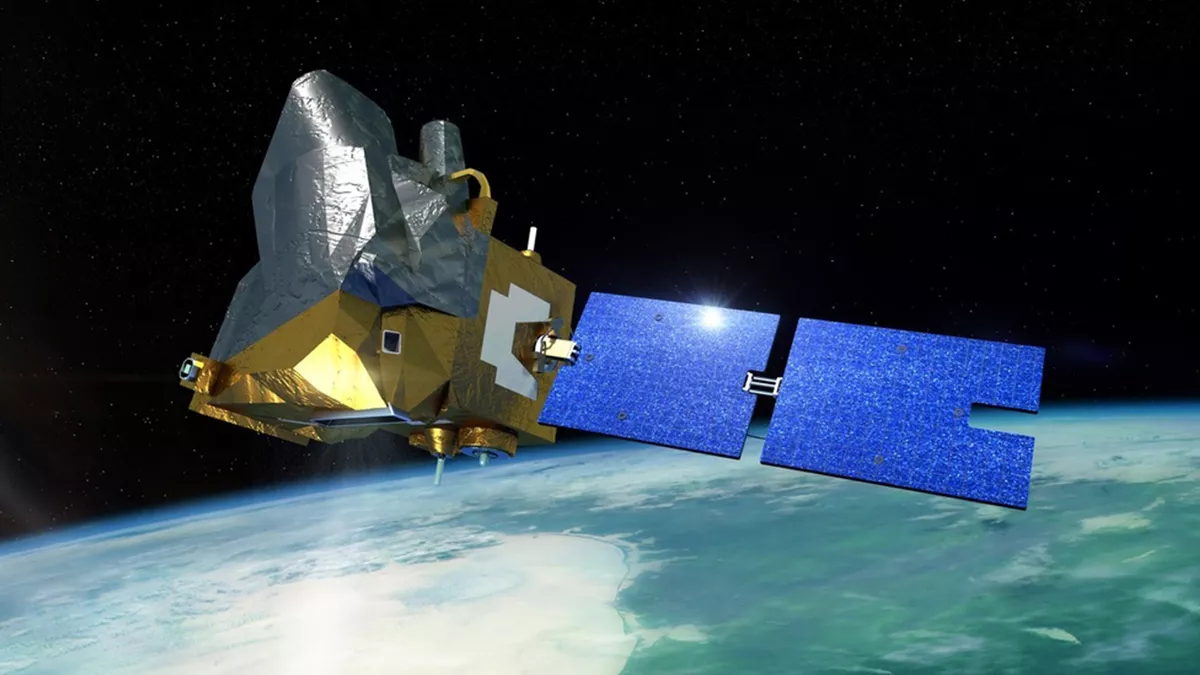
MicroCarb
MicroCarb
Mission Summary
MicroCarb is a satellite that will monitor atmospheric levels of carbon dioxide (CO2), relevant to understanding Earth’s climate. It is a joint venture between the French Space Agency (CNES) and UK Space Agency (UKSA) and is the first European satellite dedicated to measuring atmospheric CO2.
The MicroCarb mission aims to improve our understanding of the exchange of CO2 between Earth’s surface and atmosphere (fluxes). This includes quantifying emissions originating from cities and other human activities.
MicroCarb is a great example of how we can work internationally with our partners and make the best use of UK expertise to do exciting science that helps us to better understand how our planet is changing.
Dr Rob Parker, Member of the MicroCarb Mission Advisory Group and NCEO Research Fellow based at the University of Leicester.
NCEO scientists at the Universities of Edinburgh and Leicester contributed to the MicroCarb mission design and will use data collected by the satellite instrument and advanced statistical techniques to infer surface fluxes of CO2. MicroCarb will also observe solar induced fluorescence (SIF), which describes the faint glow of plants when they emit a small portion of the sunlight they have absorbed during photosynthesis. As such, SIF measurements will be used to describe photosynthetic activity. The algorithm used by the MicroCarb team was developed at the University of Leicester.
These data products together will contribute to global efforts to improve understanding of CO2 fluxes from nature and human activities. This knowledge will help inform decisions on tackling climate change and more accurately track international and intergovernmental collaborative efforts such as the 2028 Paris Agreement Global Stocktake.
Data from MicroCarb will play a crucial role in extending our current ability to verify reductions in global and national emissions of CO2 in response to the demands of the Paris Agreement.”
Professor Paul Palmer, UK Lead MicroCarb Scientist and NCEO Science Director based at the University of Edinburgh
NCEO’s role in the mission
NCEO scientists at the Universities of Edinburgh and Leicester will continually validate MicroCarb CO2 over the UK using the GEMINI-UK CO2 network, This work increases confidence in the subsequent data analysis. GEMINI-UK is part of the ongoing UK Greenhouse Gas Emissions Measurement and Modelling Advancement (GEMMA) project.
Scientists at University of Edinburgh will also use MicroCarb CO2 observations to infer spatial maps of CO2 fluxes, building on expertise and software developed within NCEO. The team at the University of Leicester will also deliver a solar induced fluorescence (SIF) data product, which will be distributed as part of the core MicroCarb data provision. Together, NCEO will explore the added value of combining MicroCarb CO2 and SIF data to improve understanding of the global carbon cycle.
NCEO Science Director Paul Palmer, and Dr Robert Parker, have been a central part of delivering the goals of MicroCarb, as part of its mission advisory group (MAG). The MAG, comprised of scientists and engineers from all the institutions involved, has driven the development of the mission. Dr Neil Humpage and Dr Michael Cartwright at the University of Leicester have been driving NCEO activities with the GEMINI-UK project and development of the SIF product.
Instrument Payload
Named for its compact size, MicroCarb is a microsatellite that is exceptionally small and lightweight. This is because it carries only one instrument: a grating spectrometer.
This spectrometer collects data in four spectral bands: two that observe O2 and two that observe CO2. All four bands are essential for fully understanding the CO2 measurements crucial to this mission. They provide vital information about cloud and aerosol properties, as well as about CO2 concentrations in the lower atmosphere.
Measurements made by the satellite are turned into quantities of CO2 by using mathematical tools to estimate how much upwelling passive radiation from the surface is intercepted by atmospheric CO2. This will include consideration of the state of the atmosphere below, as well as surface properties, such as SIF.
Mission Facts
- MicroCarb mission website
- Instrument is a single grating spectrometer with four measurement bands, focused on measuring atmospheric CO2.
- NCEO are delivering capability to quantify CO2 sources and sinks, measure Solar Induced Fluorescence (SIF) and validate MicroCarb observations using a ground-based network.
- Launch Date: July 25th 2025 by Vega C.
- Orbit: sun-synchronous orbit, 650km above the Earth. Weight: 180 kg.
- Lifetime of 5 years.
- 3 viewing modes: Nadir (overland), Glint (over oceans) and a target mode (validation).
- Target mode can also be used as a City Scanning mode, which will closely observe urban CO2 emissions. Focusing on cities in similar size to Paris and London.
- Mission Advisory Group members: Professor Paul Palmer, NCEO Science Director based at the University of Edinburgh is UK Lead MicroCarb Scientist. Dr Robert Parker, NCEO Research Fellow, is a MicroCarb Mission Advisory Group Member.
- Will serve as a pathfinder for CO2M, as well as filling a vulnerable gap in between CO2 observing satellite missions.
- MicroCarb will support countries in pursuing their global stocktake, in accordance with the Paris Climate agreement.
- Will feed into the Greenhouse Gas Emissions Measurement and Modelling Advancement (GEMMA) Programme, aimed at quantifying the UK carbon emissions.
- Funding Agency: CNES (France), EU and additional funding from UK Space Agency







